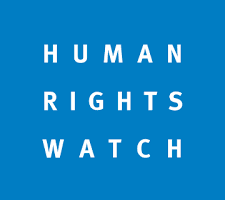From The Migration Policy Institute:
As climate change increasingly contributes to migration and displacement, there is a pressing need for measures that build resilience, prevent displacement, help climate-affected people move to safety and support receiving communities. Multilateral development banks are critical players in this space because of their ability to invest in large-scale projects that contribute to long-term sustainable development, primarily in low- and middle-income countries.
Yet the role of multilateral development banks, which committed $81 billion in climate finance in 2021, is often overlooked. Although governments increasingly recognize the need to respond to climate mobility, more attention is needed on financing large-scale programming to manage this phenomenon — an area that has not been high on the agenda at the United Nations’ COP27 conference that concludes Friday.
A Migration Policy Institute (MPI) report out today explores the unique role of multilateral development banks in climate finance and highlights opportunities for key actors in migration, humanitarian protection and other spheres to partner with them on projects that effectively target climate-related migration and displacement.
Multilateral development banks such as the African, Asian, Inter-American and Islamic Development Banks; the European Bank for Reconstruction and Development and the European Investment Bank; and the World Bank are strategically positioned to invest in large-scale projects that tackle the climate-migration nexus. Yet they face key constraints because their business model works primarily via investment loans, which must generate economic return, rather than grants. And the projects they finance are driven by the interests of their clients, often national governments that may prioritize other issues over climate mobility, analysts Lawrence Huang, Ravenna Sohst and Camille Le Coz write in Financing Responses to Climate Migration: The Unique Role of Multilateral Development Banks.
Drawing on a review of existing research and more than 30 interviews with multilateral development bank officials and other experts, the report examines the institutions’ unique role in the climate finance landscape. It also reviews the evidence on the complex linkages between climate and mobility before outlining how these banks can contribute to preventing climate-related displacement and preparing for climate mobility, in partnership with migration, humanitarian and other key actors.
The report’s recommendations include learning from past multilateral development bank investments that have touched on climate migration, funding data collection or sharing to strengthen understanding of climate migration trends and developing partnerships to support policy and project development, financing and implementation.
mpi_climate-dev-banks_final









Comments